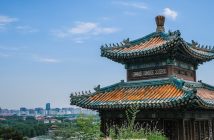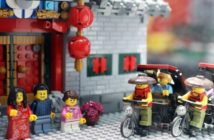Great news! On Nov 29, the Forbidden City announced that minors can now visit for free, including children under the age of 6 and/or 1.2 meters, as well as primary and secondary school students who book appointments on Tuesdays.
Tickets are available starting today via the Palace Museum’s website. During the trial period, this venerable institution will be working to improve their ticketing management service, which seemed to have experienced some difficulties this past week when it was announced that they would be selling a limited number of annual passes.

So what’s there for kids to do at the Forbidden City besides getting their step counts in? How about learning a few fun facts, courtesy of Tell Me China.
- Forbidden City was the palace of the Chinese emperors during the Ming and Qing dynasties.
- It is located in the heart of Beijing, the beloved capital city of China. What’s more, it’s the largest ancient palace in the world!
- The Forbidden City was built under the orders of the powerful Yongle Emperor of the Ming Dynasty between the years 1406 and 1420.
- More than 1 million people worked on the construction of the palatial grounds.
- The best materials were brought in from all over China, including specially made golden bricks, logs from rare trees, and blocks of marble.
- When the palace was completed, the Yongle Emperor moved the capital of the empire to Beijing City.
- The Forbidden City is enormous. It covers an area of 178 acres and includes 90 palaces with courtyards, 980 buildings, and at least 8,700 rooms.
- However, the Emperor had an army of servants to take care of his palace and all the people that lived there.
- The Forbidden City also served as a fortress to protect the Emperor and his family, as it is surrounded by a 26-foot high wall and a 170-foot wide moat.
- The main buildings were all aligned in a straight line from north to south.
- The southern part of the palace is called the outer court. It was here that the Emperor conducted official ceremonies.
- The northern inner court is where the Emperor and his family lived.
- The Emperor himself slept in a building called the Palace of Heavenly Purity, while the Empress lived in a building called the Palace of Earthly Tranquility.
- All the buildings face away from the north, which symbolized the enemies of the Chinese cold winds and evil.
- The roofs of the buildings in the city were made with yellow tiles. Yellow was the exclusive color of the Emperor and symbolized his ultimate power.
- The ceremonial buildings are arranged in groups of three, as the number three represented heaven.
- The numbers nine and five are used often because they represent the majesty of the Emperor.
- The five traditional elemental colors are used throughout the design of the palace, and these include white, black, red, yellow, and green.
- The Forbidden City still lies at the center of Beijing City.
- 24 different Chinese emperors lived in the palace over the course of nearly 500 years.
- About 100,000 artisans and craftsmen worked in the palace.
- The last emperor of China continued to live in the Forbidden City for 12 years after he abdicated the throne in 1912.
So what are you waiting for?! Get out there and explore this monument to human ingenuity and China’s fascinating history! Then pop back over to our comments section and tell us what you and your family discovered!
KEEP READING: Not Going Home for the Holidays? Good! There’s Plenty To Do Right Here in Bejing
Images: Pexels




